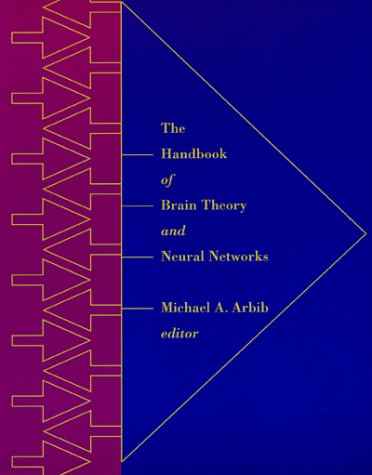Brain Theory And Neural Networks
- 412 Part III: Articles of the limb, simplifying the process of control. However, there is now convincing evidence that in programming motor commands.
- The figure on the next slide shows the model for a neuron. (Simon Haykin, NEURAL NETWORKS, 1994.
Michael A Arbib
LEADER 12291cam a22003734a 4500 001 605770 01140734.0 008 0 maua bf 001 0 eng 010 a 015 a GBA2-U5805 016 7 a 101165584 2 DNLM 020 a 035 a (OCoLC)ocm50761220 040 a DLC c DLC d UKM d C#P d NLM d OrLoB-B 049 a PVUM 050 0 0 a QP363.3 b.H36 2003 245 0 4 a The handbook of brain theory and neural networks / c edited by Michael A. Arbib; editoral advisory board, Shun-ichi Amari. et al.; editoral assistant, Prudence H.
The Handbook of Brain Theory and Neural Networks: Second Edition: 976: Medicine & Health Science Books @ Amazon.com.
246 3 0 a Brain theory and neural networks 250 a 2nd ed. 260 a Cambridge, Mass.: b MIT Press, c c2003. 300 a xvii, 1290 p.: b ill.; c 29 cm.

Dramatically updating and extending the first edition, published in 1995, the second edition of The Handbook of Brain Theory and Neural Networks presents the enormous progress made in recent years in the many subfields related to the two great questions: How does the brain work? And, How can we build intelligent machines? Once again, the heart of the book is a set of almost 300 articles covering the whole spectrum of topics in brain theory and neural networks. The first two parts of the book, prepared by Michael Arbib, are designed to help readers orient themselves in this wealth of material. Part I provides general background on brain modeling and on both biological and artificial neural networks. Part II consists of 'Road Maps' to help readers steer through articles in part III on specific topics of interest. The articles in part III are written so as to be accessible to readers of diverse backgrounds.
They are cross-referenced and provide lists of pointers to Road Maps, background material, and related reading. The second edition greatly increases the coverage of models of fundamental neurobiology, cognitive neuroscience, and neural network approaches to language. It contains 287 articles, compared to the 266 in the first edition. Articles on topics from the first edition have been updated by the original authors or written anew by new authors, and there are 106 articles on new topics. “Today, neuroscience gives us great dual hopes, one to radically solve medical problems of the brain such as Arzheimer's disease, and the other to give an answer to the long-standing question of how the brain works to yield our mind.
Medical achievements will be obtained based on accumulated knowledge of molecular and cellular events of the brain, but the understanding of the brain mechansims of mental activities requires theories and models. This handbook summerizes the success of neuroscience in developing such theories and models, and further provides a basis for future achievements toward the goal. It will help not only theorists, but also experimentalists to grasp the great potentially of theories and models in future neuroscience.” — Masao Ito, Director-General, Frontier Research Program, The Institute of Physical and Chemical Research. “It's been a half century since such pioneers as Warren McCulloch and Donald Hebb, and, particularly in the last decade, brain theory has been in flower, intertwining with both neurophysiology and artificial neural networks. Boiling it down and concentrating it, as this handbook does so successfully,is likely to set the stage for something even more interesting.” — William H. Calvin, University of Washington neurophysiologist, author of The Ascent of Mind and co-author of Conversations with Neil's Brain.